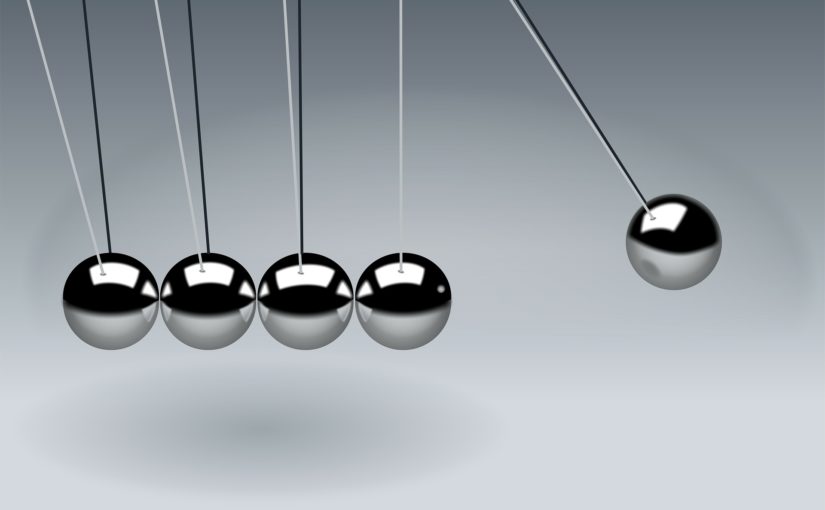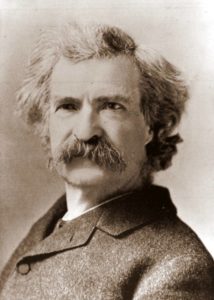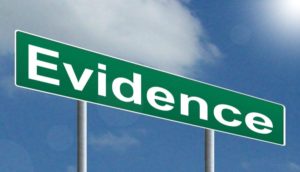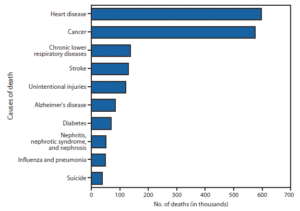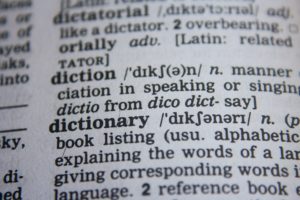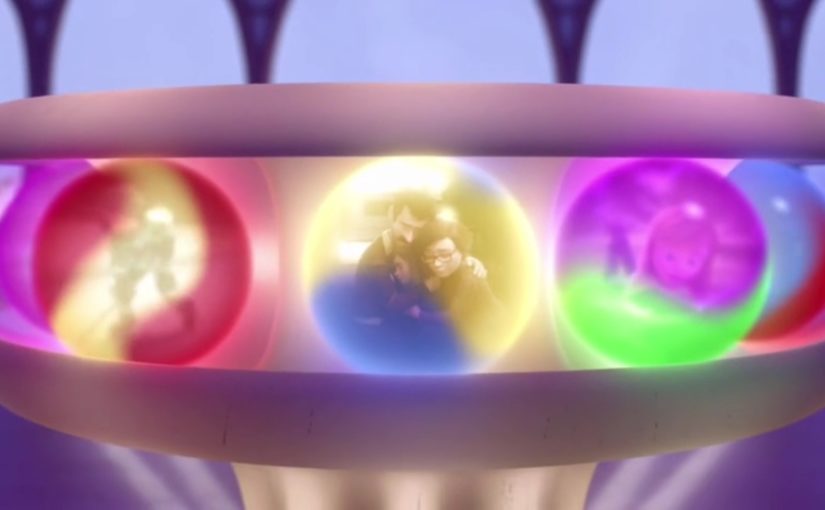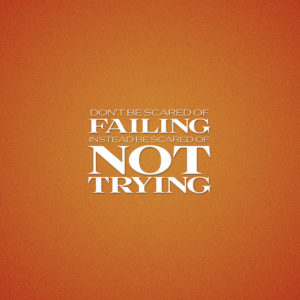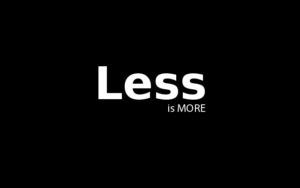Which type of illustration to professionals almost always use that amateurs do not? Every one of the illustration types we’ve covered so far has one thing in common: Explanation, Evidence, Endorsement, Example.
What makes the fifth E different?
All of the previous four Es describe something the SPEAKER does.
The last E of illustrations describes what the LISTENER does: Experience!
What Professionals Know
I’ve done hundreds of reviews and analysis of different speakers, from high paid professionals, to billion dollar company execs, to frightened teenagers.
In my notes, each speaker was evaluated on each of my 8 SpeechDeck principles of audience engagement. I took all my review notes and did an informal statistical analysis to determine, what was the single biggest differentiator between the most inspirational speakers and everybody else.
I found two!
One of those principles (the green one), was utilized by almost every professional speaker and almost no amateurs: Encouraging Participation.
And how do you encourage participation? Using the fifth E — illustrations that are EXPERIENCES.
What is an Experience?
 The first four illustration types are all illustrations based on what the speaker says. A speaker can explain, share evidence, recite examples, and quote endorsements — all without any feedback or reaction from the audience.
The first four illustration types are all illustrations based on what the speaker says. A speaker can explain, share evidence, recite examples, and quote endorsements — all without any feedback or reaction from the audience.
An illustration of “Experience,” on the other hand, requires the audience to DO something: talk back, do an activity, laugh, etc.
I will give you a list, but the options for an experience are so varied that you should not consider this a complete list. However, some popular types of experience illustrations include:
- Group activities or games
- Entertainment to generates emotion: laugh, cry, etc.
- Back and forth conversation or Q&A
- Written exercises, quizzes, or feedback
- Mnemonic devices or do-it-yourself tools and resources
The distinguishing feature of all these options is not about what the speaker does. The distinguishing feature of an experience is that the listener has to REACT!
If the audience can sit politely and ignore the speaker (as if in a lecture), the speaker is not creating a reaction. Passive audiences are a sure sign of communication mediocrity.
Did you ever notice how many political speakers arouse strong reactions and demonstrations on college campuses and churches and conventions? You don’t have to be controversial to get a reaction, but the protests and hysteria generated by controversial speakers does prove the point that speakers who create reactions grab attention.
The easy experience
I f you are a beginner, the easiest way to create an EXPERIENCE is simply to ask questions. I find that when I listen to professional speakers (the kind that are paid big bucks to speak), about half of the time the very first words out the the speaker’s mouth is either a question, or a solicitation for a raise of hands:
f you are a beginner, the easiest way to create an EXPERIENCE is simply to ask questions. I find that when I listen to professional speakers (the kind that are paid big bucks to speak), about half of the time the very first words out the the speaker’s mouth is either a question, or a solicitation for a raise of hands:
Raise your hands if you’ve ever …
Have you ever … ?
The best speakers almost always say something similar near the beginning of the speech because it sets the precedent that the audience will not be passive.
By the way, is it easier for the audience to remain passive when you just ask a question or when you say “Raise your hand if …?”
Many, many amateurs are afraid to even ask the listener to do anything. Questions are better than nothing, but the best professionals actually take control of the room and tell the listener what to do: “Raise your hands if …”
A question or a show of hands is EASY. Do it!
There is only one rule — you have to actually get an answer!
A question that the speaker asks, but that the audience isn’t allowed to answer is NOT an experience. A passive audience can ignore rhetorical questions. You’re only creating an experience if you actually allow the listener to respond (react) and answer back by a raised hand or actual conversation.
An private internal answer is a type reaction if done correctly, but it’s so much easier to know you’re doing it right when you get physical or verbal feedback.
Experience in Sales and Business
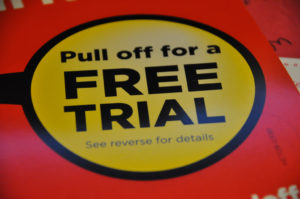 An “experience” in sales and business usually means a tangible, physical experience.
An “experience” in sales and business usually means a tangible, physical experience.
Would you buy a car without ever doing a test drive?
In sales, experience means allowing the potential customer to touch, see, and test your product. Or when that’s not possible, the successful salesman will create an experience in the customers imagination.
If you are selling a car, let them see and touch and drive the car.
If you are selling a proposal for a new highway, help them imagine the new highway. As long as they actually do the imagining, they are reacting, and you are creating an experience.
Information overload
Sometimes your presentations can be highly informational. If you’ve read my past blog posts you know I advise against information overload whenever possible.
But when lots of information is necessary give the listener something to DO with the information–an experience.
A slides deck can easily be ignored by a passive audience.
Handouts are usually just skimmed. Skimming is less passive than ignoring, but not ideal.
A non-passive handout requires reaction: fill-in-the blank, assessments, activities, exercises, etc.
The laugh factory
 If you have a talent for it, make people laugh.
If you have a talent for it, make people laugh.
Humor is one of the few reactions that uses all 7 of the principles in the SpeechDeck color-coded speaking system. In terms of our topic today, humor works because it creates a REACTION. A funny example (that generates a reaction) is always an EXPERIENCE for the audience.
If you have the skill, do it!
If you don’t have the skill, don’t force it.
I taught a workshop once, where my co-host unbeknownst to me, printed off a list of jokes from the internet and just started reading the list on stage.
Don’t do that!
That’s not an “Experience” in the terms we’re talking about. Reading jokes is an experience for the speaker. We want an experience for the audience, and that only happens when it is genuine, unique humor, that creates an involuntary audience reaction. Charity laughs don’t count.
The best experience
The best type of experience illustration is actually quite hard. It takes years of practice for most people. The best way for me the explain the “best” type of experience is by calling it the:
Ah-ha moment
The reason this is so hard is because you can’t give someone an ah-ha moment, they have to get it for themselves.
 The most highly skilled communicators will lead the listener to that emotional catharsis. Many techniques can be used to do this such as partial syllogisms, analogies, socratic questioning, withheld closure, etc.
The most highly skilled communicators will lead the listener to that emotional catharsis. Many techniques can be used to do this such as partial syllogisms, analogies, socratic questioning, withheld closure, etc.
I’ve written many posts about some of these techniques, which are beyond the scope of this post.
The basic rule is this:
You want the listener to figure it out before you tell them
If you tell them something, it’s passive. If they figure it out, it’s an active experience.
If our TV weatherman led you to figure out the forecast before he told you, it might sound something like this:
It’s going to snow this week … but when? All your shopping days look to be beautiful and dry, but let’s just say that Mr. Kringle’s sleigh won’t have any trouble this year. We expect the storm to arrive after 11pm just in time for Rudolph.
I’m not suggesting the weatherman actual say that. I merely illustrating that you know he is predicting a white Christmas even though he never actually told you that the snow is forecast on Dec 25.
You had to figure it out yourself. This is a purely intellectual experience. What makes it effective is that you can’t listen passively. You must actual DO something. You have to actual think, and engage with the weatherman or you will not understand.
There are intellectual ah-has such as above, and emotional ah-has. The best illustrations have both.
There are MANY other types of experiences, but not enough space in this post.
The Five Es of Illustration
You should use a variety of illustration types in all your presentations. You don’t necessarily have to use all five.
Using all five illustration types makes our TV weatherman a little long-winded, but here it goes anyway:
Look here at the 5 day forecast [Explanation: Visual aid] and you’ll see it will be 90 on Saturday [Explanation: Description] … like a Saudi Arabian Christmas [Explanation: Analogy]
Doppler radar [Evidence: Name] shows the next storm will still be 100 miles [Evidence: Number] to our North on Saturday evening.
The National Weather Service [Endorsement: Third-party] confirms that high pressure will build all week, peaking for the weekend. Kathy McDaniel in Summerville wrote in to say “thank you for the accurate forecast last Friday, it helped us plan our family reunion.” [Endorsement: Testimonial]. This week I’m so confident in the forecast you can call me Nostradamus [Endorsement: Association].
Weekends like this are great for nature lovers. Last weekend I went fish fishing with my son and we the most amazing sunset … [Example: Personal] What will you do this weekend? Imagine how great the cool ocean waves will feel on your ankles … [Example: Hypothetical] or cooking burgers on the BBQ [Example: Cultural]
Send your weekend pictures to the email shown on screen [Experience: Activity] … Also, we’re starting a new segment tonight where we accept live weather related questions [Experience: Conversation]. Our first question comes from twitter …
Granted, this hypothetical weatherman seems a little ADHD, but even with my contrived example, ADHD beats the typical depressed mediocre-ologist.
Mediocre speakers all sound the same, in part because they stick to just one type of illustration and wear out their welcome. There’s more to communication than just lectures and quotes.
- Explanation
- Evidence
- Endorsement
- Example
- Experience
Use all five.
Don’t sound the same the whole way.
Don’t sound the same as everyone else.
Don’t be mediocre.

